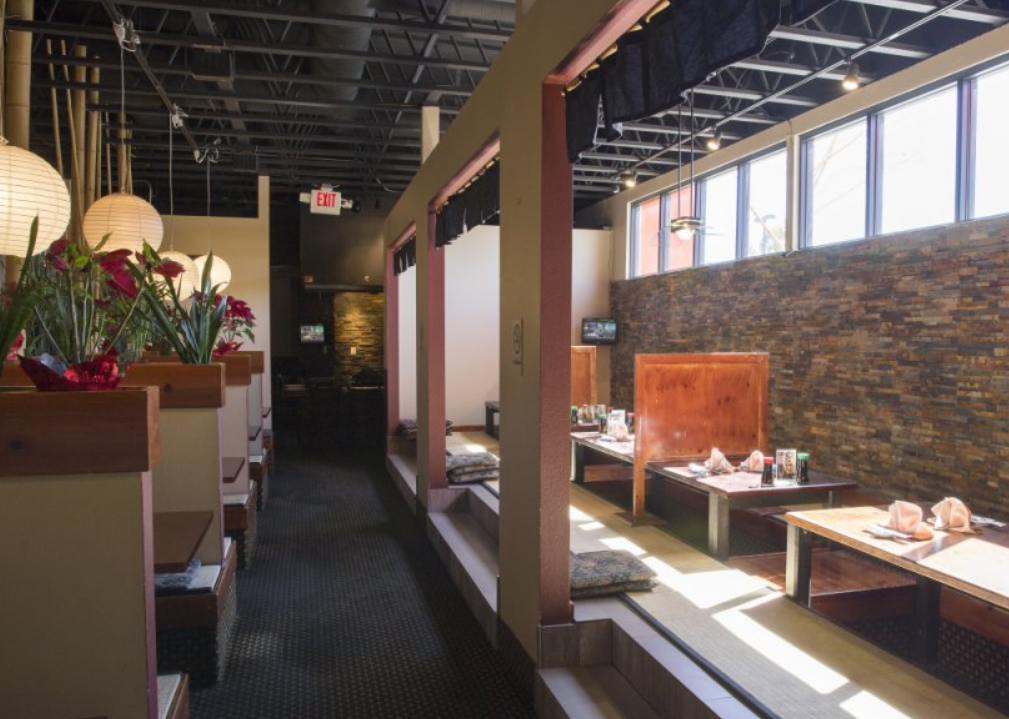Japanese Restaurant Tatami Dining
Traditional Tatami Rooms
A traditional Japanese-style room will use a comfortable type of flooring for guests to be seated on. One such type of flooring material is a mat called a tatami. The core is traditionally made of rice straw (although today it might contain modern materials) with a woven covering of igusa or soft rush straw. Tatami mats are made in standard sizes. The long sides of the tatami mat may come without edging or may be bordered with plain cloth or brocade.

Tatami seating at Osaka Japanese Bistro Henderson
The term tatami originates from the verb tatamu, meaning “to pile or fold”. This gives a clue about how original tatami mats were used, perhaps being flexible and thin enough to be folded or stacked on top of one another when not in use. Tatami mats were once luxury items used only by nobility as seating. They were also used later by samurai warriors and priests who had gained prestige. As the use of tatami mats gradually became more common, they were spread over whole rooms. Rules concerning etiquette and seating determined the placement of the tatami in the rooms. At the end of the 1600s, tatami mats became a commonplace item that could be used by the general population. Interestingly, houses in modern Japan very rarely have rooms with tatami flooring and the shapes of the mats vary between different regions in Japan.
Tatami-Style Dining Still Enjoyed Today

Tatami seating at Osaka Japanese Bistro Las Vegas
For diners who love the ambiance of the Japanese culture, there are many Japanese restaurants that feature traditional tatami-style dining, which requires that you remove your shoes. Many diners consider this type of dining experience to be more memorable, intimate, and fun. A Japanese tatami room is traditionally decorated with bonsai, arranged flowers, and small objects such as a tree trunk carved pillar carvings or decorative scrolls and is called a nihonma or washitsu. The room also has walled panels made from shoji screens for guest privacy. Whether diners want a private room for two or prefer a banquet arranged for many, a tatami room is a traditional way for Japanese restaurants to extend a warm welcome to their guests. For those who love unique experiences, tatami-style dining is something you must try!
